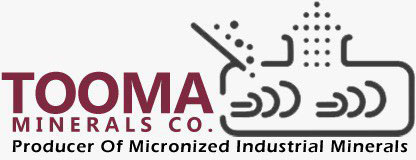
Talc powder, also known as talcum powder, is a naturally occurring mineral that is composed of hydrated magnesium silicate. It is a soft and white powdery substance that has been used for various purposes for centuries. Talc is mined from deposits around the world and is processed into a fine powder that is widely used in industries such as cosmetics, pharmaceuticals, ceramics, paint, paper, and rubber. In this article, we will explore the uses of talc powder in these industries and the controversy surrounding its safety.
Cosmetics: Talc powder is a common ingredient in many cosmetic products such as baby powder, body powder, and facial powder. It is used as a bulking agent and helps to absorb moisture and oil from the skin. Talc is also used in some eyeshadows, blushes, and bronzers to improve their texture and help them glide on smoothly. However, concerns have been raised about the safety of talc powder when used in the genital area, as it has been linked to an increased risk of ovarian cancer in women. Some manufacturers have started using alternative ingredients in their products to address these concerns.
Pharmaceuticals: Talc powder is used in the pharmaceutical industry as a lubricant and a glidant. It is added to tablets to prevent them from sticking to the manufacturing equipment and to improve their flow properties. Talc is also used in some topical ointments and powders as an absorbent. The use of talc powder in pharmaceuticals has also been questioned due to its potential health risks.
Ceramics: Talc powder is used in the ceramics industry as a filler and a flux. It is added to clay to improve its strength and to make it easier to mold. Talc is also used as a flux in ceramic glazes to lower the firing temperature and to improve the opacity and whiteness of the glaze. Talc is valued in the ceramics industry for its high melting point, chemical inertness, and ability to improve the properties of ceramic products.
Paint: Talc powder is used in paint as a filler and a pigment extender. It is added to paint to improve its opacity and to reduce its cost. Talc is also used as a flatting agent in some paints to create a matte finish. Talc powder is preferred in the paint industry for its chemical stability, low oil absorption, and ability to improve the hiding power and rheology of paint.
Paper: Talc powder is used in paper as a filler and a coating. It is added to paper to improve its opacity and brightness and to make it easier to print on. Talc is also used as a coating on some paper products such as glossy magazines to improve their surface properties. Talc is a preferred ingredient in the paper industry due to its whiteness, low abrasiveness, and ability to enhance the printing properties of paper.
Rubber: Talc powder is used in rubber as a filler and a reinforcing agent. It is added to rubber to improve its strength, stiffness, and resistance to heat and chemicals. Talc is also used as a release agent in the rubber manufacturing process to prevent the rubber from sticking to the molds. Talc is valued in the rubber industry for its chemical inertness, low abrasiveness, and ability to improve the mechanical and processing properties of rubber products.
In conclusion, talc powder is a versatile mineral with many applications in various industries. Its unique properties make it a valuable ingredient in many products.
Tooma Co is an exceptional manufacturer in the Middle East area producing fine & ultra-fine industrial mineral powders with the most advance technologies available in the world since 1982 in Isfahan, Iran.
Our products are mainly used in construction chemicals, paints, cement, concrete, casting, PVC, pavement blocks, Abrasives, sand blast, refractories, plastics, rubber, tile and ceramics as well as oil and gas wells drilling industries.

Leave A Comment